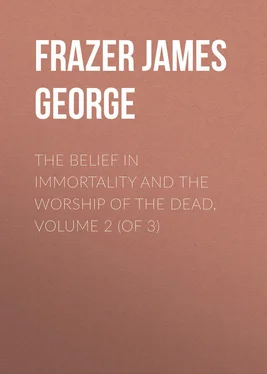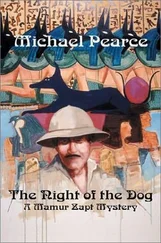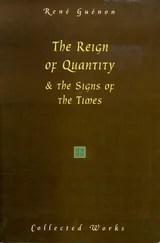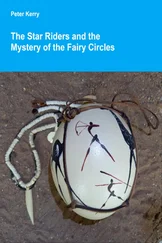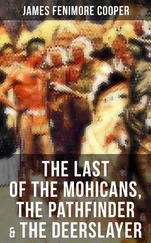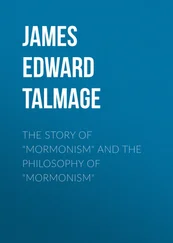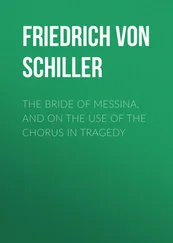James Frazer - The Belief in Immortality and the Worship of the Dead, Volume 2 (of 3)
Здесь есть возможность читать онлайн «James Frazer - The Belief in Immortality and the Worship of the Dead, Volume 2 (of 3)» — ознакомительный отрывок электронной книги совершенно бесплатно, а после прочтения отрывка купить полную версию. В некоторых случаях можно слушать аудио, скачать через торрент в формате fb2 и присутствует краткое содержание. Жанр: foreign_antique, foreign_prose, на английском языке. Описание произведения, (предисловие) а так же отзывы посетителей доступны на портале библиотеки ЛибКат.
- Название:The Belief in Immortality and the Worship of the Dead, Volume 2 (of 3)
- Автор:
- Жанр:
- Год:неизвестен
- ISBN:нет данных
- Рейтинг книги:3 / 5. Голосов: 1
-
Избранное:Добавить в избранное
- Отзывы:
-
Ваша оценка:
- 60
- 1
- 2
- 3
- 4
- 5
The Belief in Immortality and the Worship of the Dead, Volume 2 (of 3): краткое содержание, описание и аннотация
Предлагаем к чтению аннотацию, описание, краткое содержание или предисловие (зависит от того, что написал сам автор книги «The Belief in Immortality and the Worship of the Dead, Volume 2 (of 3)»). Если вы не нашли необходимую информацию о книге — напишите в комментариях, мы постараемся отыскать её.
The Belief in Immortality and the Worship of the Dead, Volume 2 (of 3) — читать онлайн ознакомительный отрывок
Ниже представлен текст книги, разбитый по страницам. Система сохранения места последней прочитанной страницы, позволяет с удобством читать онлайн бесплатно книгу «The Belief in Immortality and the Worship of the Dead, Volume 2 (of 3)», без необходимости каждый раз заново искать на чём Вы остановились. Поставьте закладку, и сможете в любой момент перейти на страницу, на которой закончили чтение.
Интервал:
Закладка:
When we remember that Tongan kings were commonly buried in such mounds as Captain Cook here describes, and further that these mounds were commonly enclosed or faced with great blocks of hewn stone, we may be disposed to accept as reasonable and probable the explanation which the natives gave of this great monolith, which, if the reported measurements of it are correct, must have been no less than twenty-eight feet high. If it was indeed a memorial of a dead king, it might be thought to strengthen the view that the great trilithon was also set up as a monument to a deceased monarch or Tooitonga.
Another possible explanation of the trilithon is, as Sir Basil Thomson points out, that it served as a gateway to some sacred spot inland. But against this view he observes that he examined the bush for some distance in the neighbourhood without finding any trace of ruins or stones of any kind. He adds that the memory of sacred spots dies very hard in Tonga, and that the natives do not believe the trilithon to have been a gateway. 322 322 (Sir) Basil Thomson, "Notes upon the Antiquities of Tonga," Journal of the Anthropological Institute , xxxii. (1902) pp. 81 sq.
It is natural to compare the trilithon of Tongataboo with the famous trilithons of Stonehenge, which it resembles in plan and to which it is comparable in size. The resemblance struck Dr. Charles Forbes, the first to publish a description of the monument based on personal observation. He says: "The route we pursued led us over a country perfectly level, with the exception of occasional mounds of earth, apparently artificial, and reminding one very much of the barrows of Wilts and Dorset, which idea is still more strongly impressed upon the mind on coming in sight of the monument, which bears a most striking resemblance to the larger gateway-looking stones at Stonehenge." 323 323 Dr. Charles Forbes, in Archaeologia , xxxv. p. 496.
But at the same time, as Dr. Forbes did not fail to note, the Tongan trilithon differs in some respects from those of Stonehenge. In the first place the interval (ten or twelve feet) between the uprights of the Tongan trilithon appears to be much greater than the interval between the uprights of the trilithons at Stonehenge. 324 324 I have no measurements of these intervals, but write from the impression of a recent visit to Stonehenge.
In the second place, the cross-stone of the Tongan trilithon is mortised much more deeply into the uprights than are the cross-stones at Stonehenge. For whereas at Stonehenge these cross-stones present the appearance of being laid flat on the top of the uprights, the cross-stone of the Tongan trilithon is sunk deeply into the uprights by means of mortises or grooves about two feet wide which are cut into the uprights, so that the top of the cross-stone is nearly flush with their tops, while its ends also are nearly flush with their outside surfaces. 325 325 (Sir) Basil Thomson, "Notes upon the Antiquities of Tonga," Journal of the Anthropological Institute , xxxii. (1902) p. 82, quoting the anonymous pamphlet The Wairarapa Wilderness .
As the origin and purpose of Stonehenge are still unknown, its massive trilithons can hardly be cited to explain the similar monument of Tongataboo. The rival theories which see in Stonehenge a memorial of the dead and a temple of the sun 326 326 Lord Avebury, Prehistoric Times , Seventh Edition (London, 1913), pp. 132 sqq. ; Sir Norman Lockyer, Stonehenge and other British Stone Monuments astronomically considered (London, 1906); C. Schuchhardt, "Stonehenge," Zeitschrift für Ethnologie , xlii. (1910), pp. 963-968; id. in Zeitschrift für Ethnologie , xliii. (1911) pp. 169-171; id ., in Sitzungsberichte der königl. preuss. Akademie der Wissenschaften , 1913, pp. 759 sqq. (for the sepulchral interpretation); W. Pastor, "Stonehenge," Zeitschrift für Ethnologie , xliii. (1911) pp. 163- (for the solar interpretation).
are equally applicable or inapplicable to the Tongan monument. In favour of the mortuary character of this solitary trilithon it might be urged that the Tongans were long accustomed to erect megalithic monuments, though of a different type, at the tombs of their sacred kings, which are situated not many miles away; but against this view it may be argued that there are no traces of burial or graves in the immediate neighbourhood, and that native tradition, not lightly to be set aside, assigns a different origin to the monument. Against the solar interpretation of the trilithon it may be alleged, first, that the monument faces north and south, not east and west, as it might be expected to do if it were a temple of the sun or a gateway leading into such a temple; second, that, while a circle of trilithons, as at Stonehenge, with an opening towards the sunrise may be plausibly interpreted as a temple of the sun, such an interpretation cannot so readily be applied to a solitary trilithon facing north and south; and, third, that no trace of sun-worship has been discovered in the Tonga islands. So far as I have observed, the Tongan pantheon is nowhere said to have included a sun-god, and the Tongans are nowhere reported to have paid any special respect to the sun. Savages in general, it may be added, appear to be very little addicted to sun-worship; it is for the most part among peoples at a much higher level of culture, such as the ancient Egyptians, Babylonians, and Peruvians, that solar worship becomes an important, or even the predominant, feature of the national faith. 327 327 Adolph Bastian observed that "sun-worship, which people used to go sniffing about to discover everywhere, is found on the contrary only in very exceptional regions or on lofty table-lands of equatorial latitude." See his book, Die Voelker des Oestlichen Asien , iv. (Jena, 1868) p. 175. Nobody, probably, has ever been better qualified than Bastian to pronounce an opinion on such a subject; for his knowledge of the varieties of human thought and religion, acquired both by reading and travel, was immense. It is only to be regretted that through haste or negligence he too often gave out the fruits of his learning in a form which rendered it difficult to sift and almost impossible to digest them. Yet from his storehouse he brought forth a treasure, of which we may say what Macaulay said of the scholarship of Parr, that it was "too often buried in the earth, too often paraded with injudicious and inelegant ostentation, but still precious, massive, and splendid."
Perhaps the impulse to it came rather from the meditations of priestly astronomers than from the random fancies of common men. Some depth of thought was needed to detect in the sun the source of all life on earth; the immutable regularity of the great luminary's movements failed to rouse the interest or to excite the fear of the savage, to whom the elements of the unusual, the uncertain, and the terrible are the principal incentives to wonder and awe, and hence to reflexion. We are all naturally more impressed by extraordinary than by ordinary events; the fine edge of the mind is dulled by familiarity in the one case and whetted by curiosity in the other.
Bearing in mind the numerous other stone monuments scattered widely over the islands of the Pacific, from the Carolines to Easter Island, Dr. Guillemard concludes that some race, with a different, if not a higher civilisation preceded the Polynesian race in its present homes, and to this earlier race he would apparently refer the erection of the trilithon in Tongataboo. 328 328 F. H. H. Guillemard, Australasia , ii. 500.
He may be right. Yet when we consider, first, the native tradition of the setting up of the trilithon by one of the sacred kings of Tonga; second, the practice of the Tongans of building megalithic tombs for these same sacred kings; and, third, the former existence in Tonga of a professional class of masons whose business it was to construct stone vaults for the burial of chiefs, 329 329 W. Mariner, Tonga Islands , i. 266.
we may hesitate to resort to the hypothesis of an unknown people in order to explain the origin of a monument which the Tongans, as we know them, appear to have been quite capable of building for themselves.
Интервал:
Закладка:
Похожие книги на «The Belief in Immortality and the Worship of the Dead, Volume 2 (of 3)»
Представляем Вашему вниманию похожие книги на «The Belief in Immortality and the Worship of the Dead, Volume 2 (of 3)» списком для выбора. Мы отобрали схожую по названию и смыслу литературу в надежде предоставить читателям больше вариантов отыскать новые, интересные, ещё непрочитанные произведения.
Обсуждение, отзывы о книге «The Belief in Immortality and the Worship of the Dead, Volume 2 (of 3)» и просто собственные мнения читателей. Оставьте ваши комментарии, напишите, что Вы думаете о произведении, его смысле или главных героях. Укажите что конкретно понравилось, а что нет, и почему Вы так считаете.
